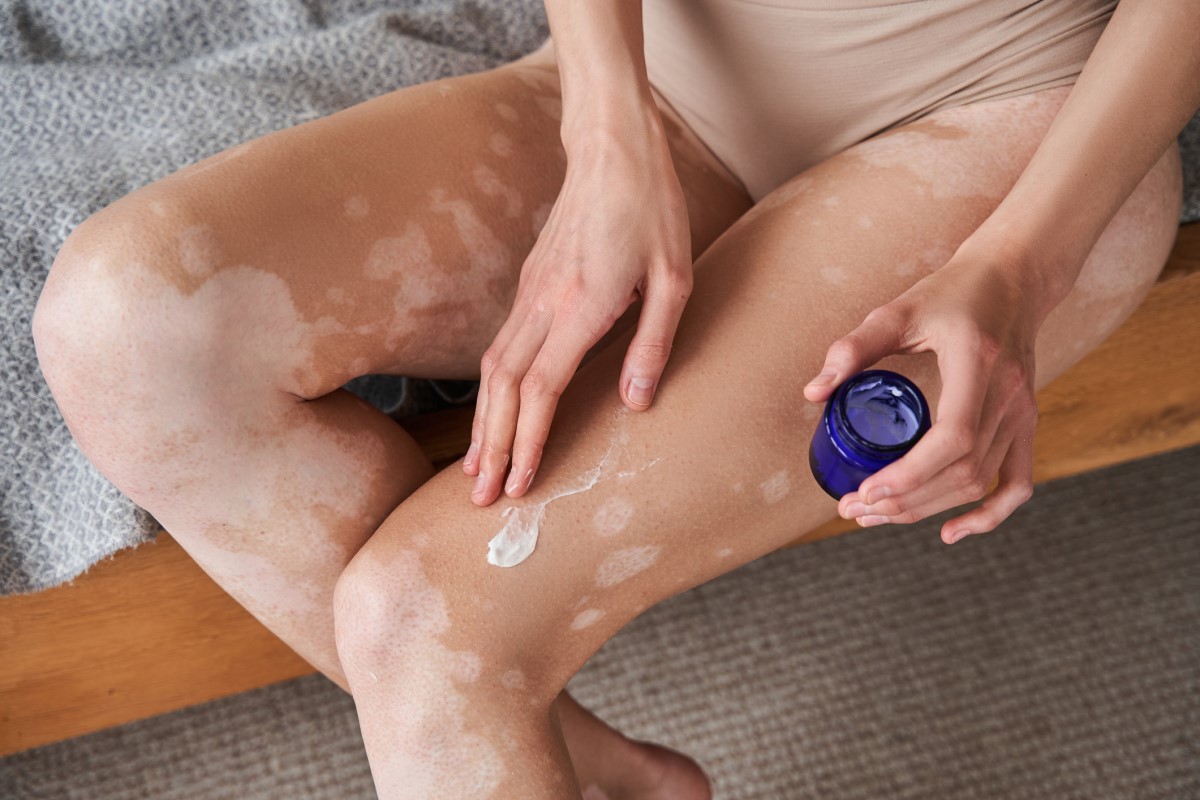Treatment of vitiligo: Topical - ointments, light, drugs and other forms
Vitiligo is a chronic disease. Therefore, treatment must be complex and combined. Before starting treatment for vitiligo, the doctor must evaluate the following factors:
- type of vitiligo
- severity
- the course of the disease
Treatment of vitiligo is individual, i.e. tailored to the specific patient. Treatment must take into account:
- the age of the patient
- phototype
- the localisation of the manifestations
- the duration
- contraindications to treatment
- risks associated with treatment
- patient cooperation

Patient education plays an important role in the success of treatment. The physician should educate the patient about the treatment options and their complexity.
The decision on what treatment the patient will undergo should be a mutual one. This will avoid disappointment from false hopes of treatment results.
The patient must be patient, as the results of treatment will not be immediate. The success of treatment sometimes takes 12-18 months.
The following table describes the different treatment options for vitiligo
| Treatment | Examples |
| 1. Topical | Corticosteroids, antioxidant enzymes (catalase, pseudocatalase) |
| 2. Luminous | Phototherapy |
| 3. Surgical | Grafts, cultured melanocytes |
| 4. Total | Corticosteroids, immunomodulators |
| 5. Other | Photoprotection, micropigmentation, camouflage techniques (self-tanning creams, make-up) |
1. Topical treatment
Topical treatment is applied at 20% extent of vitiliginous areas. Corticosteroids are the first choice.
Good repigmentation with hydrocortisone, triamcinolone or betamethasone has been achieved in 10 to 84% of cases in smaller vitiligo foci. Corticosteroids are applied in a thin layer only to vitiligo foci. They are applied once a day in the evening.
Another option for topical treatment of vitiligo is antioxidant enzymes. A gel that has these effects is available on the market:
- improves the control of skin depigmentation
- regenerates melanocytes
- helps to restore the natural production and quantity of melanin
- slows down the development of vitiligo and prevents its progressive phase
- increases the efficacy and shortens the duration of PUVA therapy
2. Phototherapy
Therapeutically, devices in the field of narrowband UVA and UVB radiation are mainly used in practice. The aim of phototherapy is to prevent the progression of the disease, prolong the improvement of symptoms, the active age of the patient and improve the quality of life.
In practice, combinations of phototherapy with other therapeutic methods are used in the treatment of vitiligo:
- calcipotriol
- glucocorticoids
- vitamin D3 derivatives
- oxsoralen
- total retinoid therapy
The combination has the advantage of accelerating the healing of skin manifestations and reducing the dose of UV radiation. Properly prescribed phototherapy induces a period of transient improvement for 6-9 months in 80% of outpatients.
3. Surgical treatment
Microsurgical treatment of vitiligo is appropriate only for localised forms. Surgical procedures are based on transplantation of naturally occurring (autologous) melanocytes into areas of the skin lacking pigment.
Different procedures differ in the way the melanocytes are harvested and processed before transplantation.
Surgical procedures are divided into 2 groups:
- procedures without separation of the harvested skin cells
- procedures involving separation of skin cells during further processing after harvesting
4. Total treatment
Total treatment is carried out by a physician if the extent of vitiligo lesions is greater than 20 %. In the case of total treatment, oral corticosteroids (dexamethasone) are used. Dexamethasone is used at a dose of 10 mg. It is administered intravenously.
5. Other options
Creams are available on the market to promote the recovery of pigmentation. These are used if you are bothered by only slightly coloured small deposits.
Other options are waterproof concealers and long-lasting make-up with UV protection. In summer, you should not forget about photoprotection, i.e. sunscreens with SPF 50.










